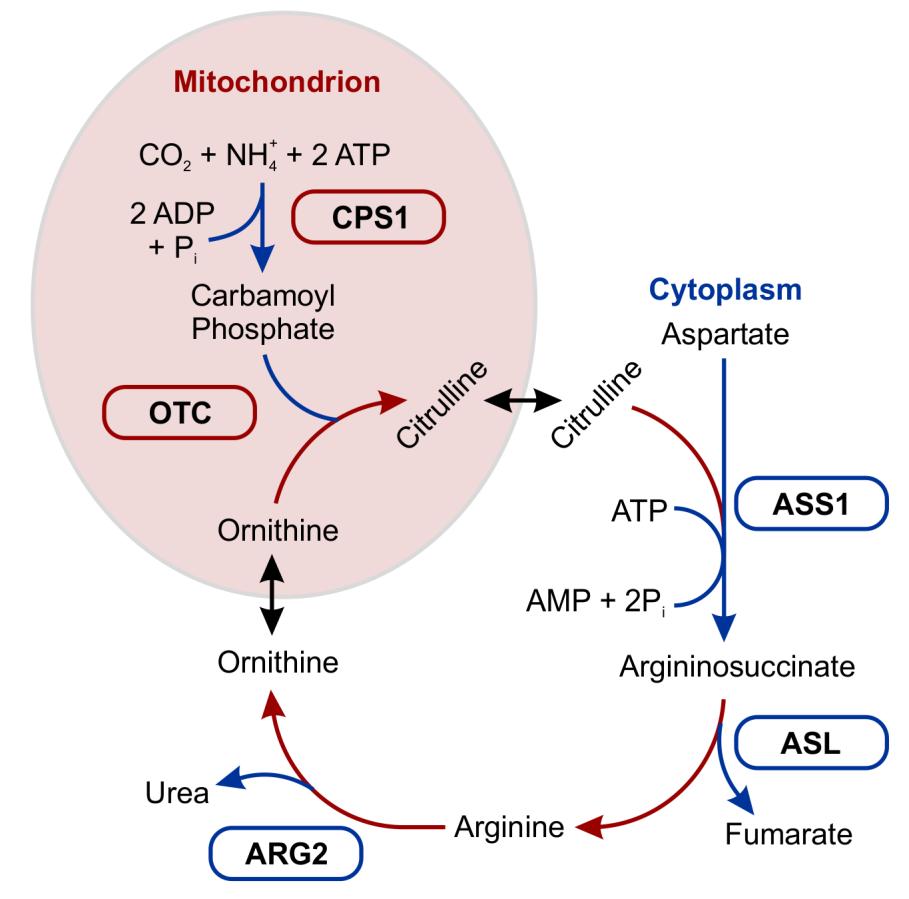Fig. S15
Schematic representation of the hepatic urea cycle. In the mitochondrion the toxic ammonium (NH4+) is coupled with carbondioxide (CO2)and phosphate from ATP to produce carbamoyl phosphate. This is the rate limiting step of the cycle and is catalyzed by the enzyme carbamoyl phosphate synthase 1 (CPS1). The carbamoylphosphate is then transferred to ornithine by ornithine-carbamoylphosphate transferase, leaves the mitochondrion and is further metabolised in two steps by argininosuccinate synthase 1 (ASS1) and argininosuccinatelyse (ASL) to finally generate the aminoacid arginine. By arginase 2 (ARG2) urea is released and ornithine is recovered, which then enters the mitochondrion to initiate a new round of the cycle.

